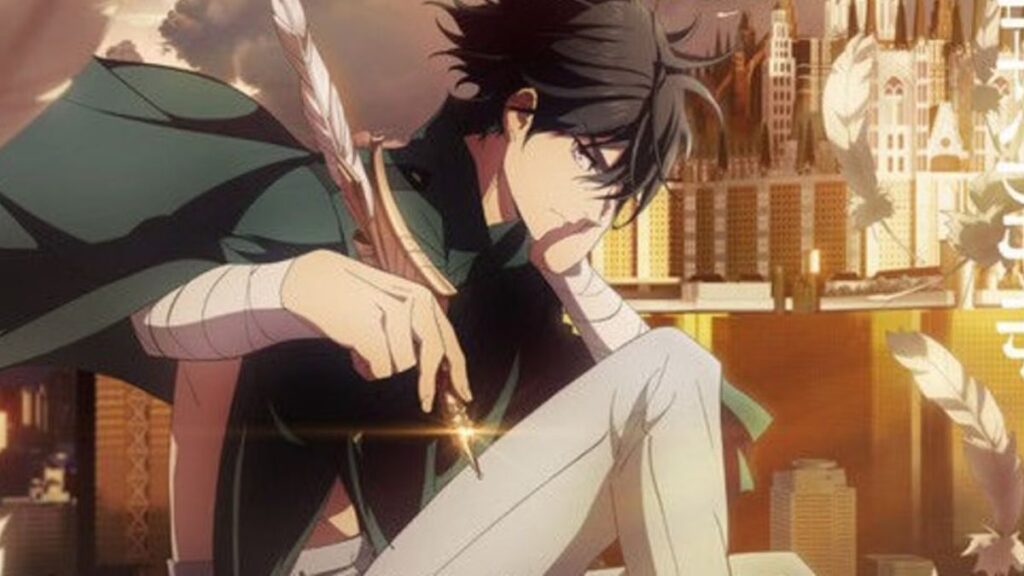Prologue: A Word Called Asuratoon
In a world where anime and manga continue to evolve at the speed of fandom itself, a new buzzword has emerged—Asuratoon. At first glance, the term might seem obscure or even fabricated, but dive deeper into online communities, fan forums, and niche digital spaces, and you’ll find Asuratoon is more than just a name—it’s a movement.
With roots shrouded in a curious blend of indie storytelling, stylistic experimentation, and digital virality, Asuratoon is quickly becoming a touchstone in modern anime and manga discourse. It’s edgy, it’s elusive, and most importantly, it’s resonating.
So what exactly is Asuratoon? Where did it come from? And why is it capturing the imagination of the global otaku sphere?
Strap in. We’re about to dissect the lore, culture, and raw aesthetic power of this breakout narrative phenomenon.
Chapter 1: Origin of a Name
Let’s start with the basics.
The term Asuratoon seems to be a linguistic portmanteau—part Asura, a reference to wrathful deities in Buddhist and Hindu mythology, and part toon, the casual short-form for animation. Together, the term blends ancient spiritual intensity with modern visual culture.
While Asuratoon hasn’t (yet) been officially registered under a mainstream anime franchise, its usage is proliferating across platforms like Pixiv, DeviantArt, and subreddits focused on fan-made manga. It has grown from underground art projects and digital zines into something of a cult brand—shared in tags, TikTok edits, and Discord conversations.
It’s what you might call a proto-IP, a seed idea being cultivated communally rather than corporately.
Chapter 2: Thematic Underpinnings – What Does Asuratoon Stand For?
One of the key reasons Asuratoon has such traction is its symbolic weight.
The “Asura” component evokes chaos, moral ambiguity, and relentless power—a frequent theme in beloved anime like Attack on Titan, Dorohedoro, and Jujutsu Kaisen. These characters aren’t clean-cut heroes or irredeemable villains—they’re something in between.
Asuratoon, as an aesthetic and narrative motif, thrives in that in-between. Think protagonists grappling with inner demons. Think morally grey worlds where violence and beauty clash like ink on textured parchment.
The art styles associated with Asuratoon content often mirror these themes: jagged linework, oversaturated blood-red palettes, cyberpunk decay, and post-apocalyptic samurai futurism.
In short: Asuratoon is for those who like their anime dark, philosophical, and bloody beautiful.
Chapter 3: Artistic DNA – What Makes Asuratoon Visuals So Distinct?
If you browse online galleries tagged with #Asuratoon, a visual identity begins to form:
-
Heavy Black Inks: Characters seem carved from shadows, reminiscent of Berserk or early Tokyo Ghoul.
-
Symmetry and Chaos: There’s an almost obsessive balance between ornate symmetry—mandala-like eyes, ritualistic scars—and violent, uncontrolled action scenes.
-
Gritty Texture Work: Often digitally drawn, these pieces simulate paper grain, ash smudges, and traditional brushwork, bridging analog technique with digital execution.
Animation clips labeled under Asuratoon themes are often short, frenetic, and set to glitched-out soundtracks or whispered narration. The result? A trance-like audiovisual experience. It’s not just anime—it’s sensory warfare.
Chapter 4: The Cult Following – From Niche to Notorious
Let’s be clear—Asuratoon didn’t emerge from a studio or a publisher.
Its rise has been fan-driven, algorithm-amplified, and shaped by community storytelling. Here’s how the fandom has evolved:
-
Reddit Threads: The /r/asuratoon subreddit now serves as a home base for lore speculation, original character design sharing, and collaborative world-building.
-
TikTok Animatics: Teen animators are crafting hyper-short Asuratoon-inspired AMVs (Anime Music Videos) stitched with cryptic captions like “He chose rage over peace.”
-
Fanfiction: Archive of Our Own (AO3) already has emerging tags that, while not explicitly branded Asuratoon, share its core themes—”revenge reincarnate,” “techno-mysticism,” “fallen angel warlords.”
It’s chaotic, raw, and unconventionally democratic. If mainstream anime fandoms are theme parks, Asuratoon is a guerilla rave in a neon-lit forest.
Chapter 5: Philosophical Layers – A New Narrative Morality?
One of the standout elements of the Asuratoon phenomenon is its refusal to deliver black-and-white storytelling.
Characters under this label aren’t paragons or tyrants—they are, to borrow from Japanese folklore, onryō: vengeful spirits who were once painfully human. Their arcs are soaked in pathos, and yet their decisions carry catastrophic consequences.
This aligns with a growing trend in anime and manga—the rejection of moral binaries. Just as Death Note challenged our concept of justice, Asuratoon appears to challenge our concept of vengeance.
Does the protagonist fight for salvation or destruction? Can they even tell the difference?
That’s the emotional meat fans are chewing on.
Chapter 6: Potential Series or Titles in the Making?
At the time of writing, Asuratoon is not an officially licensed or serialized manga. But several fan projects have started laying groundwork that could become something larger:
-
“Ashura Circuit” – A fan-driven webcomic following cybernetic warriors tasked with ending reincarnation cycles. (Over 50,000 views on Webtoon Canvas)
-
“The Eighth Heaven” – A visual novel-in-development where gods are trapped in mortal bodies on a dystopian Earth.
-
“Noonblade” – Rumored to be turning into a Kickstarter-backed pilot episode, this story follows an exorcist samurai whose emotions manifest as kaiju.
Each of these creative works borrows from the shared Asuratoon aesthetic and philosophical DNA while maintaining their own narrative identity.
Chapter 7: Cultural Parallels – The Myth Meets Manga
The word “Asura” isn’t anime-exclusive. Its mythological origins span Indian Vedas, Buddhist cosmology, and East Asian spiritual texts. These beings are not merely monsters—they are tragic, fallen, and powerful.
Asuratoon appears to modernize this archetype.
Instead of divine wars, you get interdimensional gang battles. Instead of temples, you get cyber-shrines glowing with LED kanji. Instead of monks, you get cursed mercenaries covered in digital sutras.
It’s a reinterpretation. A remix. And it speaks to Gen Z and Gen Alpha’s hunger for symbolism with edge.
Chapter 8: Is Asuratoon the Future of Indie Anime?
In a media landscape where Crunchyroll, Netflix, and Amazon are snapping up animation IPs at an unprecedented rate, Asuratoon might be the punk rock answer to polished production.
While not studio-backed, it’s driven by the same hunger that created Chainsaw Man, Made in Abyss, and Devilman Crybaby—stories that bleed style, subvert tropes, and emotionally wreck their audience.
And because Asuratoon isn’t owned by anyone, it can be owned by everyone—remixed, reinterpreted, expanded.
The line between fan and creator dissolves. Every TikTok sketch, every concept art drop, every short story under the Asuratoon banner helps build a collaborative mythology.
Chapter 9: From Hashtag to Headliner – What’s Next?
It’s only a matter of time before someone takes Asuratoon mainstream. Whether it’s a YouTube studio, a small anime production house, or a well-funded indie team, the pieces are already in motion.
There are whispers that certain animation studios in South Korea and the Philippines are monitoring Asuratoon communities for potential collaborators. Some visual artists have already sold NFTs under the Asuratoon moniker, creating immersive 3D gallery experiences.
In a way, Asuratoon is becoming less of a term and more of a genre-in-waiting.
Epilogue: The Power of Naming the Unnamed
Asuratoon is not a brand, not a company, not yet even a complete story. It’s an idea with claws.
It captures a generation’s creative discontent—a hunger for narrative chaos and emotional depth. It reflects what happens when myth collides with memes, when artistry meets anarchy.
And in that tension—between pain and power, structure and collapse, ink and blood—Asuratoon thrives.
Whether it becomes the next iconic title or remains an underground gospel, one thing is clear:
The anime and manga world is watching. And Asuratoon is not going anywhere.







